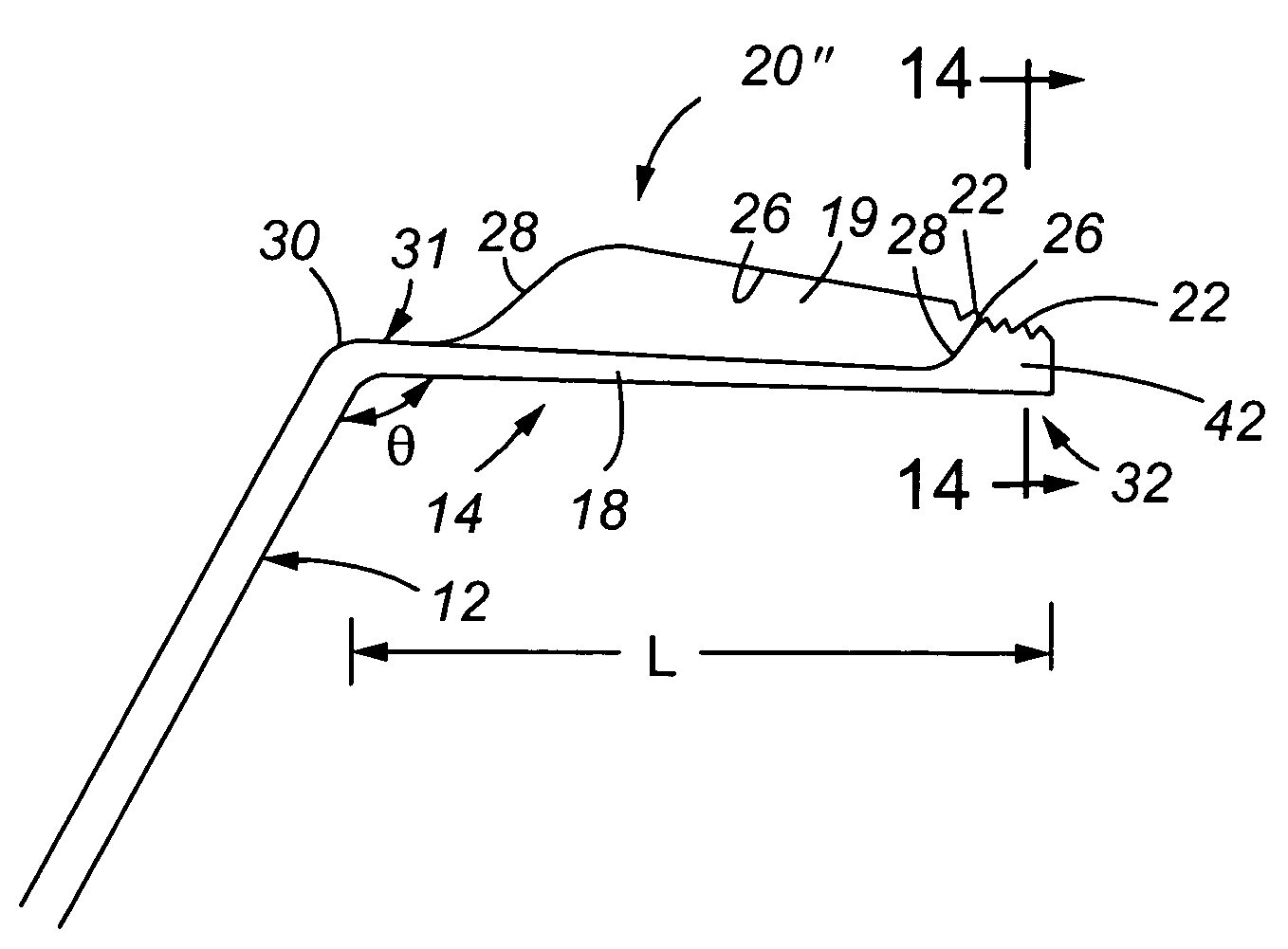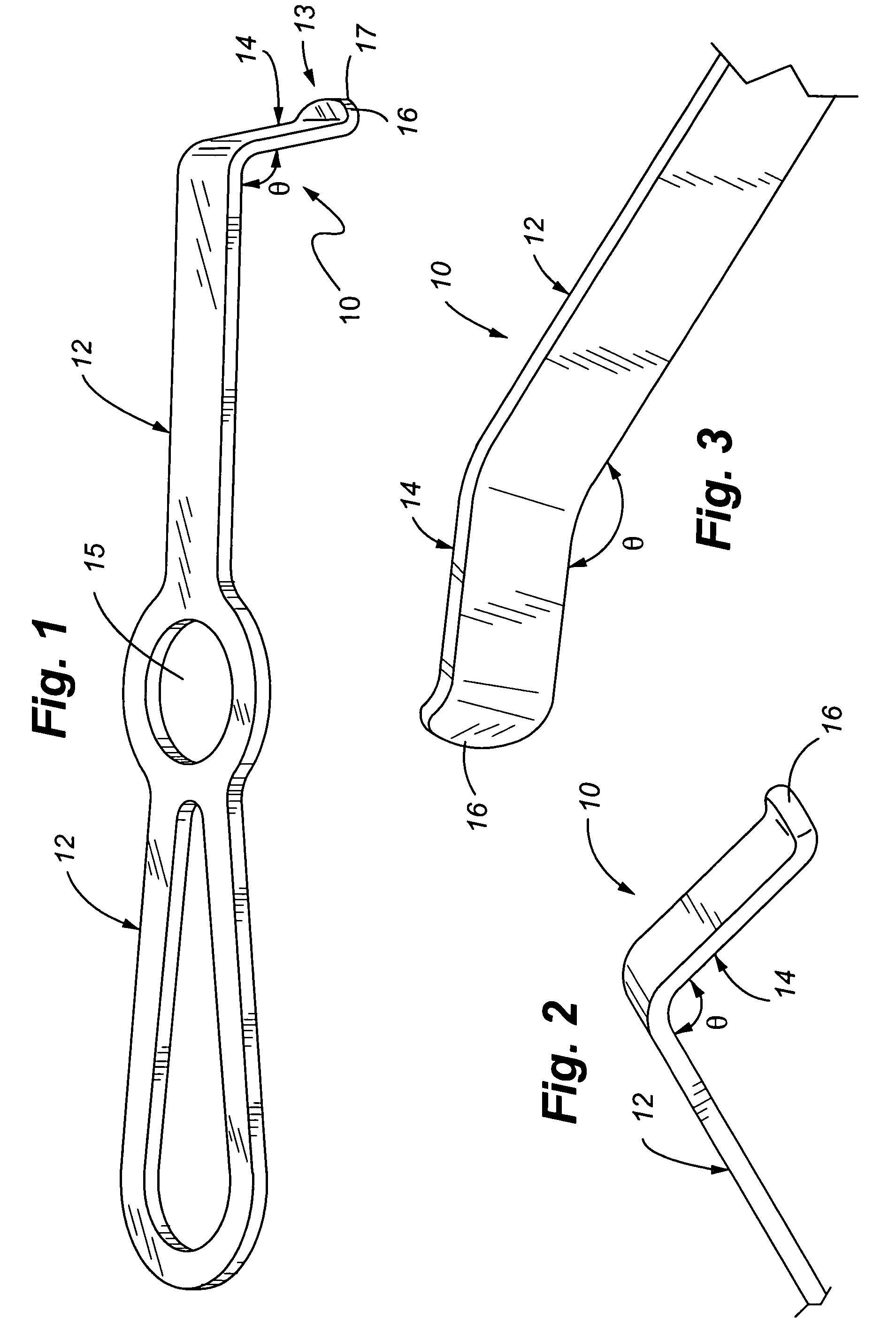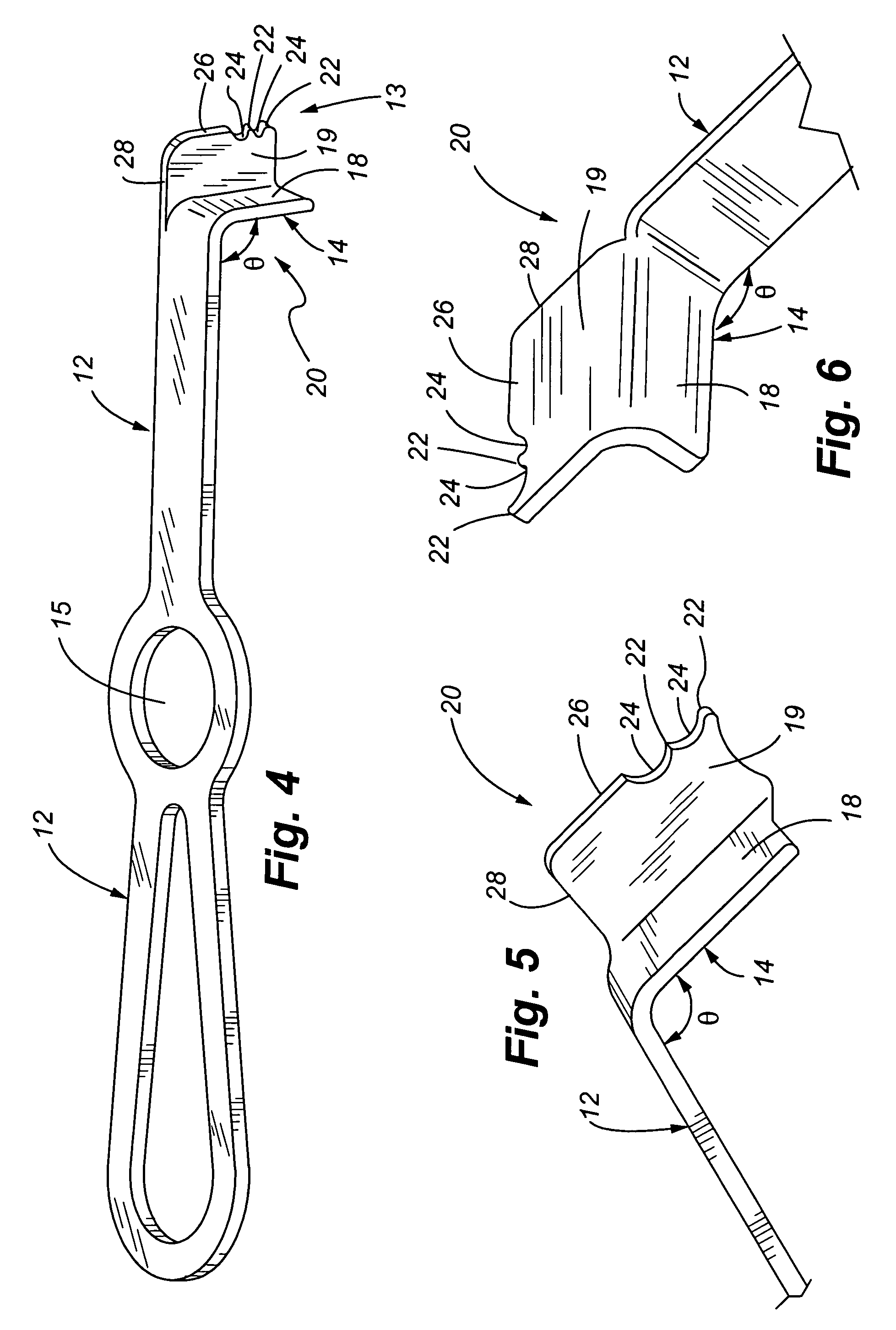Method and device for microsurgical intermuscular spinal surgery
a technology of intermuscular spinal surgery and microsurgical operation, which is applied in the field of microsurgical intermuscular spinal surgery, can solve the problems of inability to specifically the ability to frequently compromise the posterior lumbar fusion, and the inability to precisely retract the requisite structur
- Summary
- Abstract
- Description
- Claims
- Application Information
AI Technical Summary
Benefits of technology
Problems solved by technology
Method used
Image
Examples
Embodiment Construction
[0033]The present invention is directed to a device and a method for performing an instrumented lumbar interbody fusion or dynamic fixation utilizing a minimally invasive approach. The device used by the surgeon to perform the minimally invasive approach is a retractor, wherein the retractor has a number of structural features as set out below that enable the surgeon to use the retractor to perform a minimally invasive surgical procedure.
[0034]Referring now to FIGS. 1–3, a first embodiment of the present invention is illustrated and is generally directed to the use of a tissue retractor 10 for use in lumbar arthrodesis or dynamic fixation. For the first embodiment, retractor 10 includes a handle 12 at one end, and a retractor blade 14 at a second end. The handle 12 allows a surgeon to hold and manipulate the retractor 10 and thereby manipulate a functional tip 13 of the retractor 10 to work in the intermuscular plane, engage the articular complex, and provide working access for plac...
PUM
 Login to View More
Login to View More Abstract
Description
Claims
Application Information
 Login to View More
Login to View More - R&D
- Intellectual Property
- Life Sciences
- Materials
- Tech Scout
- Unparalleled Data Quality
- Higher Quality Content
- 60% Fewer Hallucinations
Browse by: Latest US Patents, China's latest patents, Technical Efficacy Thesaurus, Application Domain, Technology Topic, Popular Technical Reports.
© 2025 PatSnap. All rights reserved.Legal|Privacy policy|Modern Slavery Act Transparency Statement|Sitemap|About US| Contact US: help@patsnap.com



